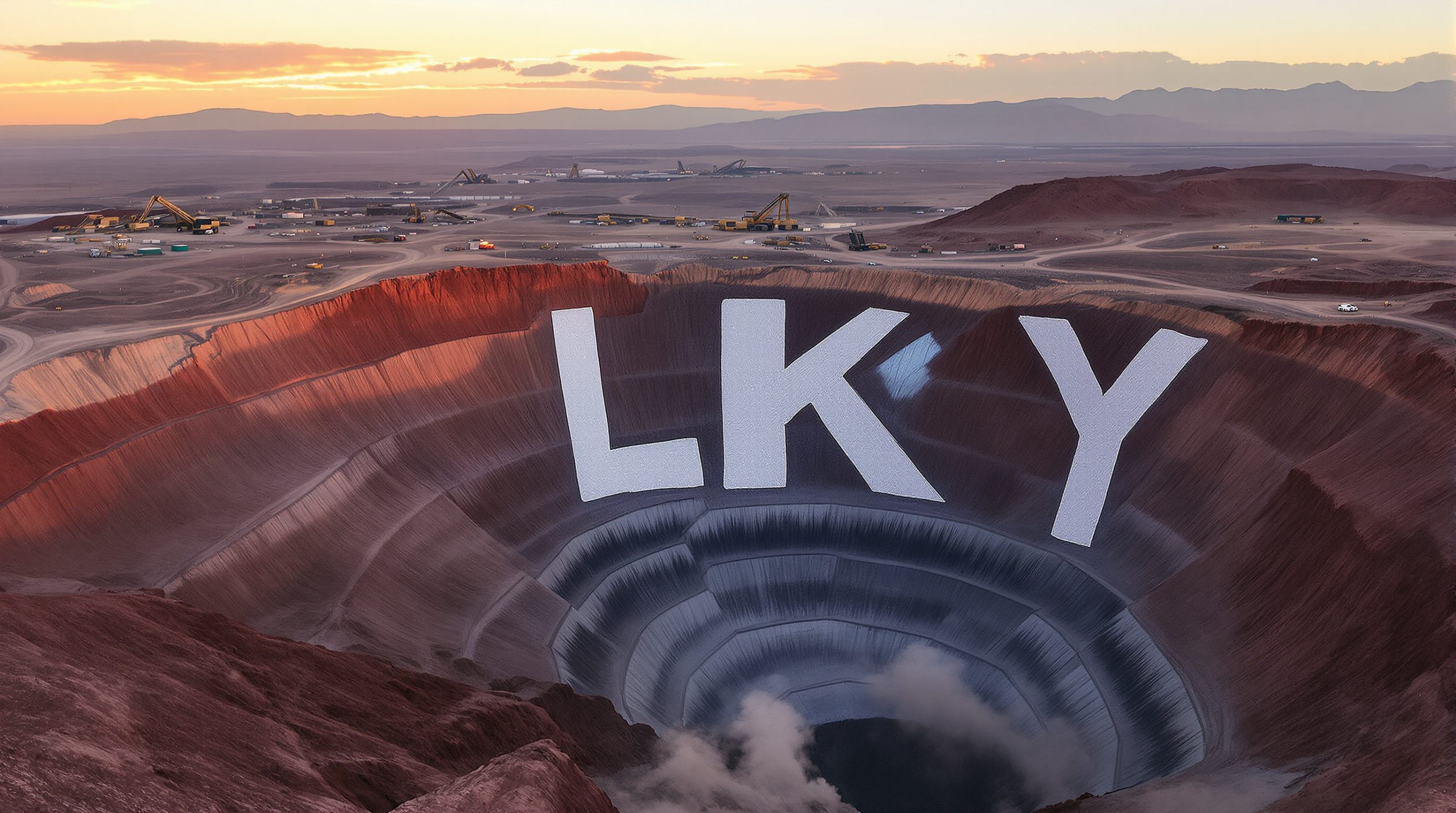Pioneer Lithium Limited (ASX: PLN) has delivered compelling evidence of uranium potential at its Central Buttes Project in Wyoming, with pioneer lithium advanced satellite analysis wyoming uranium project revealing multiple high-priority targets that align perfectly with known uranium occurrences across one of America's most productive uranium districts.
According to the company's latest announcement, the strategic positioning in Campbell County's Pumpkin Buttes region—home to 573 USGS-recorded uranium occurrences—has been validated through sophisticated remote sensing analysis conducted by renowned spectral imaging specialist Dr. Neil Pendock. Using Sentinel-2 VNIR/SWIR imagery, the analysis identified critical mineral signatures and gas anomalies that are hallmarks of uranium-rich roll-front systems.
Satellite Technology Reveals What's Hidden Beneath the Surface
The breakthrough came through advanced ASTER and Sentinel-2 analysis, which identified sixteen spectral endmembers across Pioneer's 69 Central Buttes claims. The report indicates these spectral signatures include key minerals such as pyrite, illite, muscovite, haematite, quartz, and feldspar—all characteristic indicators of the reducing and oxidising environments where uranium typically accumulates in roll-front systems.
Perhaps most compelling are the gas anomaly discoveries detailed in the announcement. Furthermore, the analysis detected helium, hydrogen, and radon gas anomalies that coincide with high-rank mineral endmembers across the project area. These gases are directly produced through uranium decay pathways, providing strong evidence of potential mineralisation beneath shallow cover.
Key Technical Findings:
- Strong spatial correlation with known uranium occurrences in the district
- Spectral signatures consistent with sandstone-hosted redox-controlled uranium systems
- Gas anomalies indicating uranium decay processes active in the subsurface
- Mineral assemblages typical of the productive Wasatch Formation
CEO Michael Beven commented:
"We now have multiple well-defined spectral and gas anomalies that correlate strongly with known uranium occurrences across the Pumpkin Buttes district. The alignment of roll-front indicator minerals, decay-related gas anomalies and the favourable geological setting of the Wasatch Formation provide us strong confidence in the potential scale and quality of the Central Buttes Project."
Understanding Roll-Front Uranium Systems: Why Location Matters
Roll-front uranium deposits represent some of the most economically viable uranium resources globally, particularly suited for In-Situ Recovery (ISR) operations that minimise environmental impact whilst maximising extraction efficiency.
These deposits form when uranium-bearing groundwater encounters chemically reducing zones, typically at the interface between oxidised red sandstone and reduced grey or carbonaceous horizons. Consequently, the uranium precipitates at these redox boundaries, creating concentrated zones of mineralisation that can extend for kilometres along favourable geological trends.
Formation Process
Roll-front systems develop through a distinctive process where oxidising groundwater carries dissolved uranium compounds through permeable sandstone layers. However, when these uranium-rich fluids encounter reducing conditions—often created by organic matter, coal seams, or hydrogen sulphide—the uranium precipitates from solution, forming crescent-shaped deposits that "roll" through the host rock over geological time.
The Eocene Wasatch Formation, which hosts Pioneer's targets, is renowned for containing these systems at shallow depths of 140-900 feet, making them ideal candidates for low-cost ISR extraction. In addition, the presence of thin coal seams and carbonaceous debris within the formation creates the perfect reducing environment for uranium concentration.
ISR Mining Advantages
In-Situ Recovery involves injecting a solution (typically containing oxygen and carbon dioxide) into the ore zone through injection wells, dissolving the uranium, and pumping the pregnant solution to the surface through recovery wells. This method offers significant advantages over conventional mining:
Why This Matters for Investors:
- ISR operations typically have lower capital requirements than conventional mining
- Environmental footprint is significantly reduced compared to open-pit mining
- Operating costs are generally lower, improving project economics
- Faster path to production compared to traditional mining methods
Strategic Position in America's Premier Uranium District
The Central Buttes Project sits within the Pumpkin Buttes uranium district, one of the most prolific uranium-bearing regions in the United States. This area has been a cornerstone of American uranium production since the mid-20th century, with numerous ISR and roll-front deposits successfully developed throughout the region.
| Project Advantages | Strategic Value |
|---|---|
| Location | Campbell County, Wyoming – Tier-1 uranium district |
| Geological Setting | Eocene Wasatch Formation – proven uranium host |
| Deposit Type | Roll-front systems – ISR amenable |
| Depth | 140-900 feet – shallow, economic targets |
| Infrastructure | Established uranium mining region |
| Regulatory | Aligned with US critical mineral priorities |
According to the announcement, the project's location within the Powder River Basin provides significant infrastructure advantages, with established transportation networks, skilled workforce, and regulatory frameworks already in place to support uranium development.
Historical Context
The broader Pumpkin Buttes region has been systematically explored since the 1950s, when the U.S. Atomic Energy Commission identified extensive uranium mineralisation across the eastern Powder River Basin. During the 1960s–1980s, several major uranium companies carried out systematic exploration programs, confirming the presence of multiple roll-front uranium systems at shallow to moderate depths.
Next Steps: From Discovery to Development
The report outlines Pioneer's systematic approach to advance the Central Buttes Project, building on the satellite analysis results to identify drill-ready targets:
Immediate Priorities:
- Integration of spectral anomalies with geological and structural datasets
- On-ground reconnaissance and validation of satellite targets
- Handheld scintillometer surveys to confirm radiometric responses
- Sample collection and analysis where permissible
Phase 2 Development:
- Detailed airborne geophysical survey to map structural controls
- Definition of redox boundaries and lithological contacts
- Generation of high-priority drill targets
- Permitting for initial drilling programs
The systematic approach reflects industry best practices for uranium exploration, with each phase designed to de-risk the project whilst building toward resource definition drilling.
Investment Thesis: Critical Minerals in a Strategic Location
The pioneer lithium advanced satellite analysis wyoming uranium project represents a compelling opportunity in the rapidly expanding uranium sector, particularly as governments worldwide prioritise energy security and clean energy transitions. The US Government has designated uranium as critical to national security, creating a supportive policy environment for domestic uranium development.
Key Investment Drivers:
| Factor | Opportunity |
|---|---|
| Resource Potential | Multiple targets in proven uranium district |
| Technical Risk | Low – established deposit types and geology |
| Infrastructure | Excellent – existing uranium mining region |
| Market Dynamics | Strong – uranium prices recovering, policy support |
| Development Path | Clear – ISR extraction methodology proven |
The combination of technical merit, strategic location, and favourable market conditions positions Pioneer to capitalise on the growing uranium market whilst building a portfolio of US-based critical mineral assets.
Market Context
Global uranium markets have experienced significant volatility over recent decades, but the growing emphasis on nuclear energy as a clean baseload power source has renewed interest in uranium supply security. For instance, the US seeks to reduce dependence on foreign uranium sources, creating opportunities for domestic producers.
Why Investors Should Track Pioneer Lithium
Pioneer Lithium has demonstrated strategic acumen in securing prospective uranium ground in one of America's premier uranium districts. Furthermore, the company's systematic approach to exploration, combined with the compelling technical results from satellite analysis, suggests significant upside potential as the project advances.
The Central Buttes Project addresses multiple investment criteria simultaneously: exposure to critical minerals, location in a mining-friendly jurisdiction, proven deposit types, and alignment with US energy security priorities. With upcoming field programs and systematic target development, Pioneer offers investors leveraged exposure to uranium discovery potential in a Tier-1 district.
Critical Success Factors:
- Proven District: Location within established uranium province
- Technical Validation: Strong correlation with known occurrences
- Infrastructure Advantage: Established mining region with existing support
- Policy Support: US critical minerals designation
- Systematic Approach: Methodical exploration progression toward drilling
Key Takeaway:
The pioneer lithium advanced satellite analysis wyoming uranium project has secured a strategic foothold in Wyoming's premier uranium district, with satellite analysis confirming multiple high-priority targets that align with known uranium systems. As the company advances systematic exploration programs, investors should monitor progress closely given the compelling combination of technical merit, strategic location, and favourable uranium market dynamics.
The convergence of technical opportunity and market timing positions Pioneer Lithium as a uranium exploration story worth following as it transitions from early-stage target generation toward resource discovery and development. However, the company's methodical approach, combined with the validated geological potential of the Central Buttes Project, creates a foundation for potential value creation in the expanding critical minerals sector.
Want to Learn More About Pioneer Lithium's Wyoming Uranium Discovery?
Don't miss out on this compelling uranium story unfolding in one of America's most productive mining districts. Pioneer Lithium's systematic approach to exploring the Central Buttes Project, combined with the strong technical validation from satellite analysis, presents a unique opportunity in the critical minerals space. To stay updated on Pioneer Lithium's progress as they advance from satellite targets to drill-ready prospects, and to discover more emerging opportunities in the ASX mining sector, subscribe to our YouTube channel for exclusive insights, company updates, and expert analysis on the companies shaping Australia's mining future.




